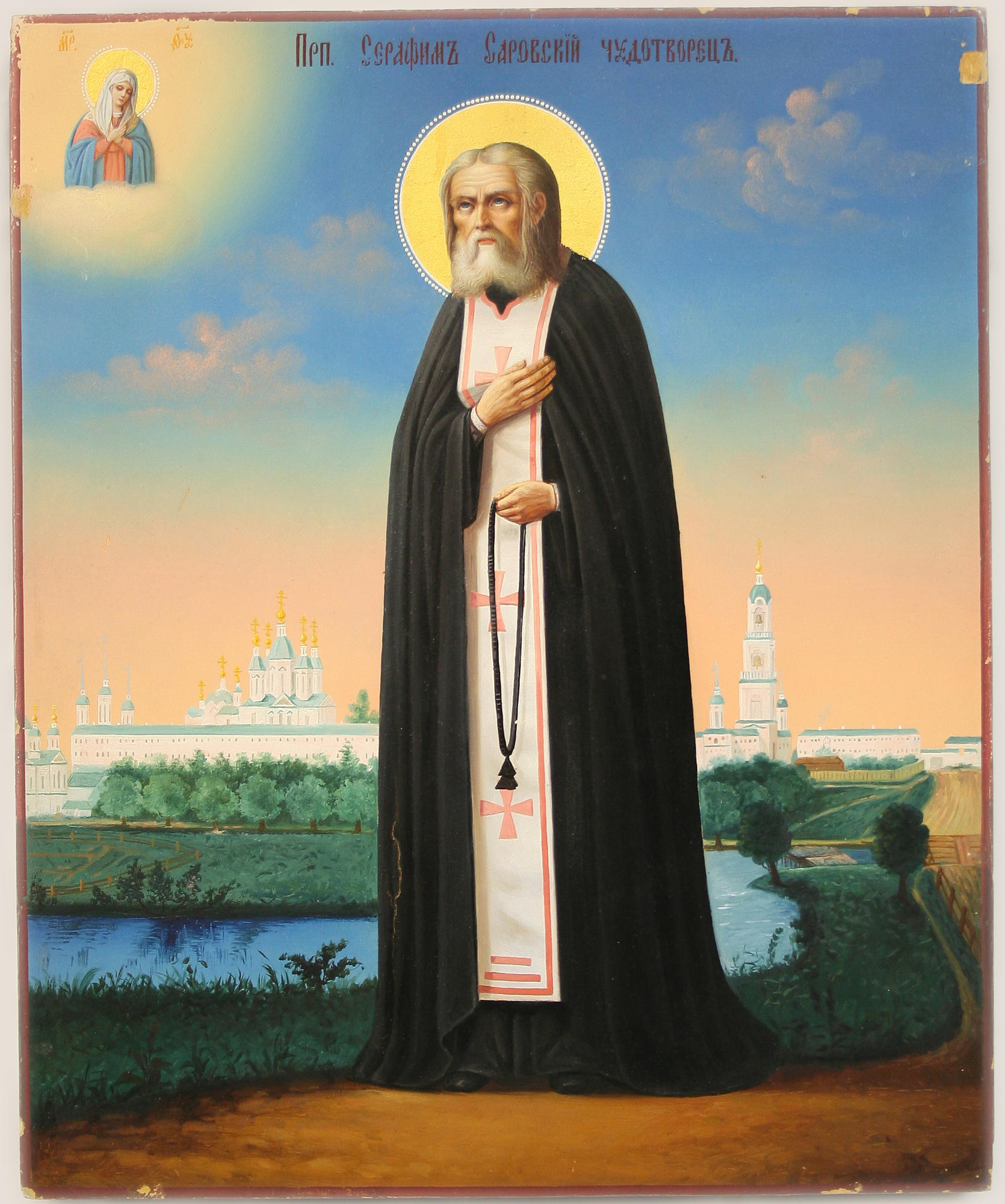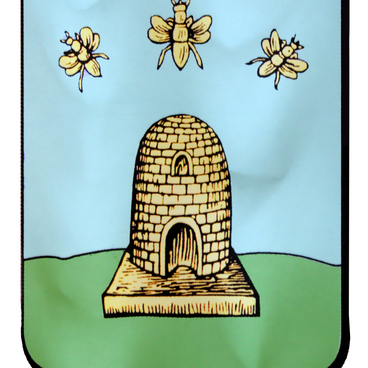The icon shows Venerable Saint Seraphim of Sarov, a hermit and an ascetic, one of the most worshipped saints in the Russian Orthodox Church. Seraphim is dressed in a black raiment of a monk; he has a ‘lestovka’ in his hands: a prayer rope of Old Believers. The Venerable is shown bow-backed: in this way the painter reminds us of an episode from the life of St. Seraphim when he was attacked by bandits and had his skull fractured with the back of an axe.
The monk-to-be, secularly known as Prokhor Moshnin, was born in Kursk in 1759. When he was 17, he undertook a pilgrimage to the Kiev-Pechersk Lavra (monastery), where an elderess told him to go to the Sarov Monastery in the Tambov Governorate. Two years later, in 1778, he became a noviciate and 8 years after that he took the monastic vows and assumed the name of Seraphim.
In 1794, Seraphim, being already a priest-monk of the Sarov monastery, built a cell five kilometers away from the monastery and settled down there in seclusion. He wore the same clothes all year round, fed practically on ash-weed grass, read sacred books, prayed daily and practiced stylitism. Stylitism is one of the Christian ascetic acts of faith when a monk was continuously praying while standing on an open pillar. As the legend goes, Seraphim spent exactly 1,000 days and prayed standing on a huge bolder stone. It has not been possible to find a confirmation of that act though.
The monk-to-be, secularly known as Prokhor Moshnin, was born in Kursk in 1759. When he was 17, he undertook a pilgrimage to the Kiev-Pechersk Lavra (monastery), where an elderess told him to go to the Sarov Monastery in the Tambov Governorate. Two years later, in 1778, he became a noviciate and 8 years after that he took the monastic vows and assumed the name of Seraphim.
In 1794, Seraphim, being already a priest-monk of the Sarov monastery, built a cell five kilometers away from the monastery and settled down there in seclusion. He wore the same clothes all year round, fed practically on ash-weed grass, read sacred books, prayed daily and practiced stylitism. Stylitism is one of the Christian ascetic acts of faith when a monk was continuously praying while standing on an open pillar. As the legend goes, Seraphim spent exactly 1,000 days and prayed standing on a huge bolder stone. It has not been possible to find a confirmation of that act though.




